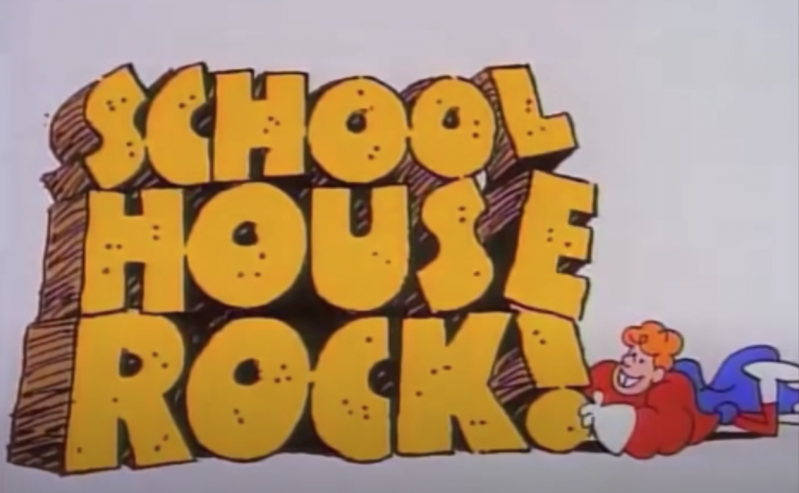George Newall, one of the originators of “Schoolhouse Rock,” died the other day, setting off ripples of nostalgia among those of us born during the Johnson administration.
Ah, those boob tube days kicking it in “the vast wasteland,” as one F.C.C. chairman famously called it way back in ’61. As Saturday morning fare goes, I’ll always defend the intellectualizing benefits of Bugs Bunny’s wiseass Brooklynese, or the animator Tex Avery and his adult satire delivered on the sly, but those were produced for the moviehouses, weren’t they, and rerun later on TV, where the lowest common denominator was ever the aim.
“Schoolhouse Rock,” with its animated civics, grammar, and math lessons set to remarkably catchy tunes, was meant to join “Sesame Street” as a corrective, in those more hopeful days when the concept of the public good still held water.
Maybe the rockingest of those songs, the jazzman Bob Dorough’s “Three Is a Magic Number,” from 1973, was given currency a year ago in the credits of a monster hit of a movie, “Spider-Man: No Way Home,” when De La Soul’s irresistibly upbeat hip-hop riff on it ran in the credits.
All of which sent me back to my favorite concert, pre-kids, when, a-courtin’ 20 years ago, my future wife and I stumbled on Dorough at the keys in a Cutchogue vineyard’s banquet hall, the guest of Richard Sudhalter, the cornetist, writer, and music scholar, who lived on the North Fork at the time. Barbara Lea was there on vocals. A stand-up bassist, too.
A couple of years later, working at The Star, I would interview Sudhalter, his playing days over following a stroke, plenty of cause for bitterness, but as a profile subject he could not have been more gracious. I thought it unusual for such an accomplished person to be so helpful and free of condescension. Or maybe those accomplishments were in fact the reason.
He’d written books on Bix Beiderbecke, his hero and fellow cornetist, on the forgotten influence of early white jazz musicians, and on the great Hoagy Carmichael, whose music was the focus of the show that night at the vineyard.
We were easily the youngest people there. I remember one white-haired gent cupping his hands behind his ears to better take in Sudhalter’s cornet, ringing in its clarity. And then Dorough, with his soft, funky, talky singing voice.
I know, oldster, I know. We won’t be hearing their like again.

